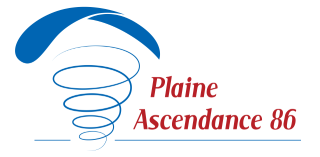Content
When debt to income is equal to one it is MD, and when debt to income is less than one it is LD. If loan repayments past due is between two and six it is MD, and if loan repayments past due is greater than six it is LD. Practical applications of fuzzy theory were initiated in the 1970s as skepticism about its existential nature was dispelled (see Amid (Amid, n.d.) and the references therein). Fuzzy theory has since become popular because it provides an appropriate tool for modeling complex and uncertain systems. Fuzzy logic has several suitable features that make it a flexible and powerful toolbox for dealing with inaccurate data (for a review of applications, see (Dikjkman et al., 1983)). Moreover, a fuzzy system can easily be established on the expertise of experienced people. Therefore, since part of this research is based on expert knowledge, we used fuzzy logic .
Bankers and insurers, like computer folks, know about GIGO—garbage in, garbage out. If they lend to or insure risky people and companies, they are going to suffer. In other words, to reduce asymmetric information, financial intermediaries create information about them.
Repayment records of applicants who had previously obtained loans can be checked easily and cheaply. Moreover, the expectation (there’s that word again) of a long-term relationship changes the borrower’s calculations. The game, if you will, is to play nice so that loans will be forthcoming in the future. AI systems enable you to score customers more frequently than once a month, enabling the incorporation of real-time transactional data. Models can incorporate a wide range of data points, including a customer makes payments, when they seek cash advances and how they uses their credit cards. Businesses that are considered high-risk include those that are relatively new, those that have no credit history or those that have poor credit ratings.
Calculating Credit Risk
You are leaving wellsfargo.com and entering a website that Wells Fargo does not control. Wells Fargo has provided this link for your convenience, but does not endorse and is not responsible for the content, links, privacy policy, or security policy of this website. In periods of growth, some small business owners may be tempted to spend profits immediately in an effort to continue their success.

A credit analyst is a financial professional who assesses the creditworthiness of individuals, companies, or securities. The offers that appear in this table are from partnerships from which Investopedia receives compensation. Investopedia does not include all offers available in the marketplace. A government grants bankruptcy protection to an insolvent consumer or business. A company is unable to repay asset-secured fixed or floating charge debt. The main features of loans include secured vs. unsecured loans, amortizing vs. non-amortizing loans, and fixed-rate vs. variable-rate loans. Sign up for the free BAI Banking Strategies newsletter and get industry insights delivered to your inbox.
Regulatory Technical Standards On Conditions For Capital Requirements For Mortgage Exposures
Most lenders employ their models to rank potential and existing customers according to risk, and then apply appropriate strategies. With products such as unsecured personal loans or mortgages, lenders charge a higher price for higher-risk customers and vice versa. With revolving products such as credit cards and overdrafts, the risk is controlled through the setting of credit limits.
Tightening – Lenders can reduce credit risk by reducing the amount of credit extended, either in total or to certain borrowers. For example, a distributor selling its products to a troubled retailer may attempt to lessen credit risk by reducing payment terms from net 30 to net 15. Significant resources and sophisticated programs are used to analyze and manage risk. Some companies run a credit risk department whose job is to assess the financial health of their customers, and extend credit accordingly. They may use in-house programs to advise on avoiding, reducing and transferring risk. Companies like Standard & Poor’s, Moody’s, Fitch Ratings, DBRS, Dun and Bradstreet, Bureau van Dijk and Rapid Ratings International provide such information for a fee. Credit score analysis is the process through which different companies evaluate an individual’s or a company’s credit score to help determine how creditworthy the entity is.
Moody’s assigns provisional ratings to Bayview Opportunity Master Fund VIa Trust 2022-INV3 – Yahoo Finance
Moody’s assigns provisional ratings to Bayview Opportunity Master Fund VIa Trust 2022-INV3.
Posted: Tue, 15 Feb 2022 08:17:05 GMT [source]
There is a theorem according to which, if there is a target system like that shown in Fig.11, then a fuzzy system can be designed as closely as desired to the system. Different methods have been proposed for the implementation of Fig.11, but the most important structure proposed so far is an adaptive network-based fuzzy inference system . It adapts itself to the input data and gradually minimizes error based on the gradient descent training principle. An ANFIS is a comparative neural network offering the advantages of learning, optimization, and fuzzy logic. Combining classifiers is one of the concerns of recent research in machine learning. Twala explored the predictions of five classifiers in credit risk predictions based on their manner of confronting noise and accuracy in applying classifier ensembles. He showed that the ensemble of classifiers can improve the accuracy of prediction .
As the largest credit risk manager in the mortgage industry, we employ prudent standards and advanced technologies to acquire quality loans, prevent defaults, and reduce losses. We continuously evolve our CRT programs to broaden the types of loans covered and promote growth in the credit risk transfer market. Through our suite of credit risk transfer vehicles, we offer opportunities for investors to share in the credit performance of our book of business.
Types
Trading VaR is the measure of market risk of the company’s trading positions which are classified as trading assets or trading liabilities in the balance sheet. Market risk are also measured by stress testing and sensitivity analysis.
By intervening proactively, you may be able to save the account before it is charged off, which can retain a customer and bolster your organization’s bottom line. By identifying patterns of customer behavior, AI models can predict delinquency long before a customer actually misses a payment — or flag a customer who’s ready for an increased credit limit. By leveraging available data, banks and credit unions can operate more efficiently without adding sources of friction to the customer experience. MainStreet Technologies is now Abrigo, giving you a single source for all your enterprise risk management needs. Use the contact us button here, or the link in the top navigation, to reach product support for your MST products. Learn what non-payment insurance is and how it supports company growth by covering non-payments of invoices.
Regulatory Technical Standards On Materiality Threshold Of Credit Obligation Past Due
Geography – the repayment capacity of the borrower is determined by geographical location. Term loans and leases – instalment loans, auto loans and leases, student and educational loans, personal finance, and other exposures with similar characteristics. Collateral price and/or the returns on collaterals are the primary source of returns of borrowing.There is a thin dividing line between collateral as a source of repayment and collateral as a risk mitigant. Concentration risk and diversification opportunities can be identified by means of calculating marginal risk contributions of individual exposures to the overall portfolio risk. Default correlation with respect to two obligors arises in the context of letter of credit-backed debt, credit guarantees, and counterparty risk . No lender wants to send a debt to collections if they don’t absolutely have to. Also, most customers won’t return once they start receiving collections calls — and acquiring a new customer can cost up to 25 times more than retaining an existing one.
Sageworks is now Abrigo, giving you a single source for all your enterprise risk management needs. Use the login button here, or the link in the top navigation, to log in to your Sageworks products. At many banks and credit unions, loan review can be a tedious and manual process to satisfy regulatory requirements. Thorough documentation of calculations and factors behind risk ratings lead to increased confidence in the portfolio. Risk rate and document loans, leading to a more consistent process that identifies problems and instills exam confidence. When faced with bad debts, your business needs to know it can count on an insurance safety net.
Best Practices In Credit Risk Management
Hsieh et al. (Hsieh & Hung, 2010) introduced a preprocessing step for obtaining an efficient ensemble classifier. They proposed class-wise classification using several data-mining techniques such as NN, SVM, and Bayesian networks to further increase the efficiency of the ensemble of classifiers (Hsieh & Hung, 2010). Credit measures are used to calculate an issuer’s creditworthiness, as well as to compare its credit quality with peer companies. Key credit ratios focus on leverage and interest coverage and use such measures as EBITDA, free cash flow, funds from operations, interest expense and balance sheet debt. With respect to priority of claims, secured debt ranks ahead of unsecured debt, and within unsecured debt, senior debt ranks ahead of subordinated debt.
It also supports more accurate decisioning, especially for thin file clients with little to no credit history. You can identify the potential for credit risk of a potential new client by reviewing data about the company from the local Chamber of Commerce, credit bureaus, bank and trade data and the company 10k. This data can help you better understand your potential client’s creditworthiness and help you decide if you should extend credit and with what terms.
- Estimate credit quality correlations based on a multi-factor analysis of equity market prices.
- Based on this, they established a model called the sorting smoothing method (Yeh & Lien, 2009).
- The eight articles in this series together describe the transformation of credit risk measurement at these three levels.
- The principal currencies hedged include the euro, Japanese yen, British pound, Canadian dollar, and Australian dollar.
- Identify problem loans early, and gain insight into portfolio credit quality.
It’s possible to give your creditworthiness a facelift by reviewing your credit report for any mistakes, paying down credit card debt, making all payments on time and cutting credit risk types expenses wherever possible. The potential loan would be the debt which can be taken by the borrower on the basis of his credit cards and other general creditworthiness.
For example, an investor who lent money to battery manufacturers, tire manufacturers, and oil companies is extremely vulnerable to shocks affecting the automobile sector. In most cases, it is simply the amount borrowed by the debtor plus interest payments. Default Probability is the probability of a debtor reneging on his debt payments. Stand out and gain a competitive edge as a commercial banker, loan officer or credit analyst with advanced knowledge, real-world analysis skills, and career confidence.

Most companies will run your credit check and if the credit risk is too high, then you’ll be denied service. If your credit isn’t good enough, meaning your credit risk is too high, then you won’t be able to get an apartment there. Alternately, some companies make you pay a higher interest rate if your credit risk is high. Late payments can cause significant damage to your credit score, and they stay on your credit report for seven years. An advanced internal rating-based is a method of managing a financial company’s credit risk internally. LGD or loss given default is the amount of money a financial institution loses when a borrower defaults on a loan, depicted as a percentage of total exposure.
Definition Of Credit Risk
A business owner can monitor business loan interest rates and only strike when rates are low. When the dollar is performing well throughout the market, interest rates should be lower, too. Central government control thus resulted in low incentive and efficiency among the specialised banks. This low efficiency was reflected by the declining rate of return on loans. The average rate of return on a loan of RMB 100 fell by 51.7 per cent in eight years, from 2.42 per cent in 1985, to 1.71 per cent in 1992.
In my day job, ive helped consumer finance companies raise both back leverage for their fund and equity. All types of consumer loans. volumes are remarkable. lenders think that a pool of "diverse" low credit borrowers somehow mitigates risk. 5c of credit. can't mitigate character
— Always Thinking, CFA, MBA, CBV 🍁 (@curiousCAD) February 8, 2022
Further, counterparty risk increases due to positively correlated risk factors; accounting for this correlation between portfolio risk factors and counterparty default in risk management methodology is not trivial. Creditworthiness may change over time, and initial/current ratings do not necessarily reflect the creditworthiness of an issuer or bond over an investor’s holding period. Valuations often adjust before ratings change, and the notching process may not adequately reflect the price decline of a bond that is lower ranked in the capital structure.
A standardized credit score such as FICO score is determined of the borrower. The FICO score helps in determining the credit history, repayment capacity and creditworthiness of an individual.
If the rating is low then the issuer is considered to have a high credit risk of default and alternatively, if it has a high rating then it is considered to be a safe investment. Credit risk is the possibility of a loss resulting from a borrower’s failure to repay a loan or meet contractual obligations. Traditionally, it refers to the risk that a lender may not receive the owed principal and interest, which results in an interruption of cash flows and increased costs for collection. Excess cash flows may be written to provide additional cover for credit risk. When a lender faces heightened credit risk, it can be mitigated via a higher coupon rate, which provides for greater cash flows.
